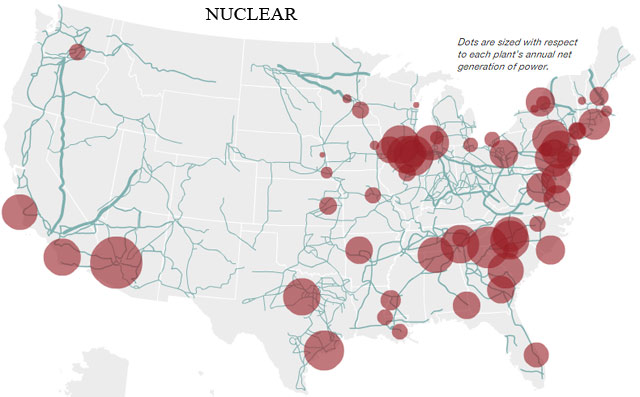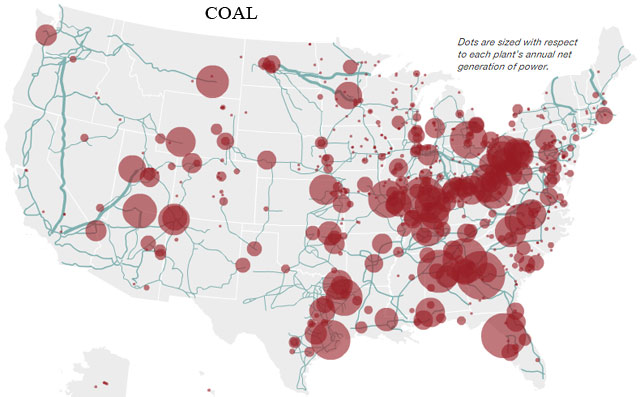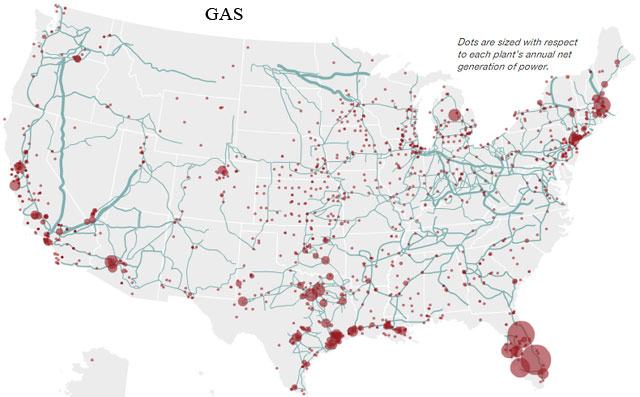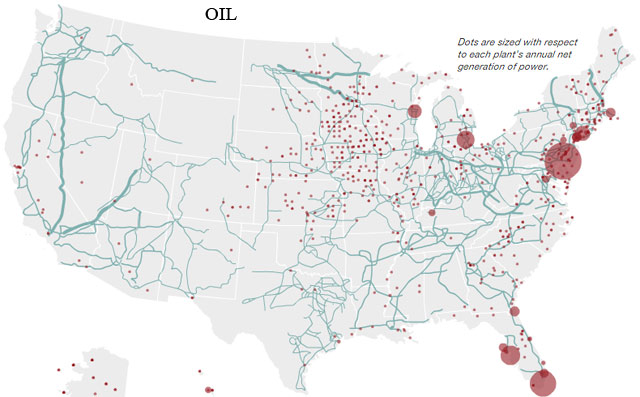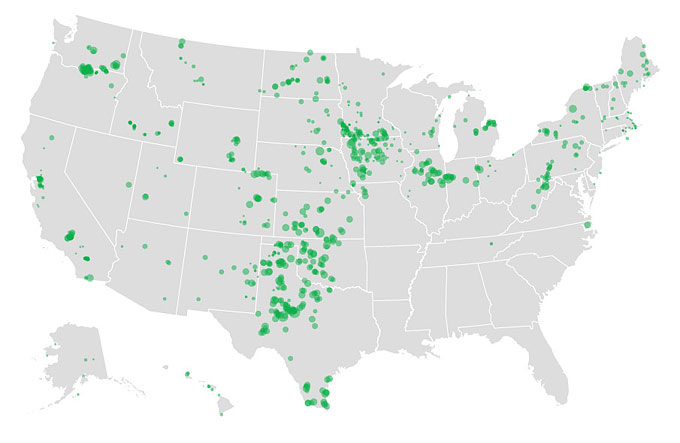Power Plants in the United States – Gas, Coal, Nuclear, Hydro, Wind
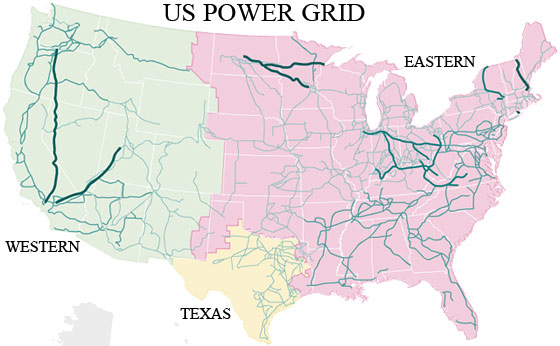
The modern world is entirely dependent upon, and fueled by, electricity from several power generation sources.
Electricity power generation is primarily sourced from natural gas, coal, nuclear, hydro, wind, solar, oil.
The following maps show where each power plant location is in the United States. They also illustrate the power plant’s relative size with respect to annual generation of power.
As of December 31, 2017, there were about 8,652 power plants in the United States. They have operational generators with a combined electricity generation capacity of at least 1 megawatt (MW). A power plant may have one or more generators, and some generators may use more than one type of fuel.
– US Energy Information Administration
The background (squiggly lines) overlay on the maps indicate the location of major electrical power grid High Voltage lines (from 345 kV to 1,000 kV).
Nuclear Power Generation
There are 60 commercially operating nuclear power plants with 98 nuclear reactors in 30 U.S. states. They generated about 20 percent of electricity in the United States.
Coal Power Generation
There are ~400 coal-powered electric power plants in the United States. They generate about 30 percent of the nation’s electricity.
Natural Gas Power Generation
There are 1,793 natural gas-powered electric power plants in the United States. They generate about 34 percent of the nation’s electricity.
Oil Power Generation
There are 1,076 oil-powered electric power plants in the United States. They generate only about half of 1 percent of the nation’s electricity .
Hydro Power Generation
There are 1,444 hydroelectric power plants in the United States. They generate about 7 percent of the nation’s electricity.
Map of Every Solar Power Plant Location in the USA
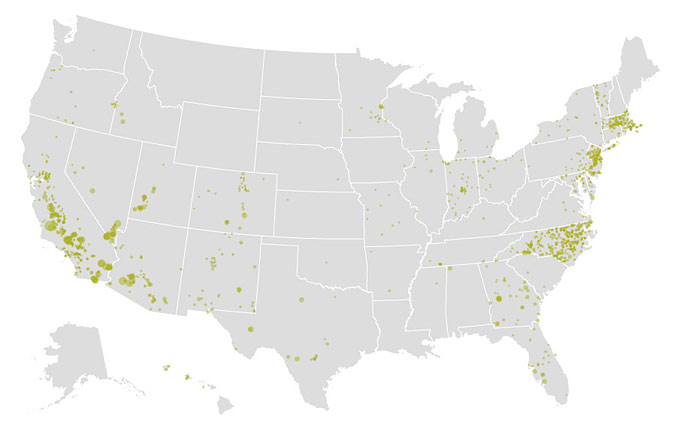
source: WashingtonPost.com
There are 1,721 solar-powered electric power plants in the United States. They generate about 1 percent of the nation’s electricity.
Map of Every Wind Power Plant Location in the USA
There are 999 wind-powered electric power plants in the United States. They generate about 6 percent of the nation’s electricity.
States that rely heavily on nuclear power
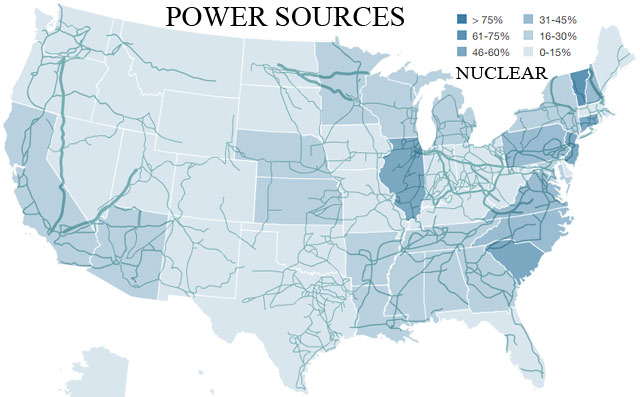
States most reliant on electricity from nuclear:
Illinois
Vermont
Connecticut
New Jersey
South Carolina
Nuclear Power Plant Meltdown – 50 Mile Radius
States that rely heavily on coal power
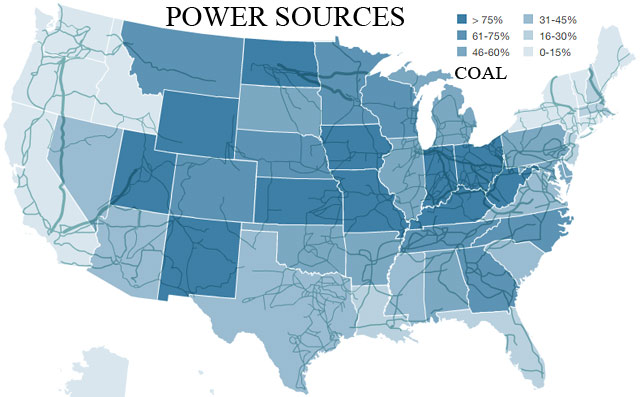
States most reliant on electricity from coal:
North Dakota
Wyoming
Utah
New Mexico
Kansas
Iowa
Nebraska
Indiana
Ohio
Kentucky
West Virginia
States that rely heavily on gas power
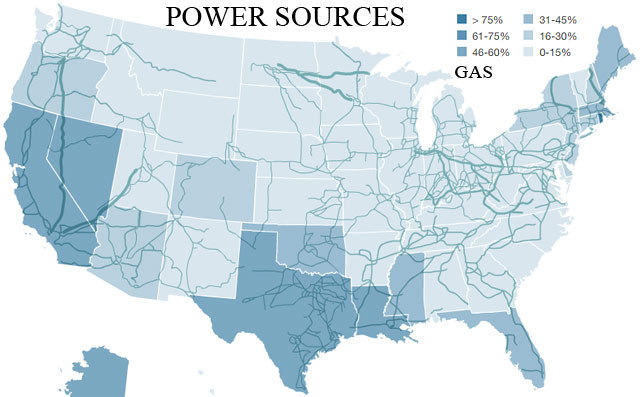
States most reliant on electricity from natural gas:
California
Nevada
Texas
Louisiana
Florida
Alaska
States that rely on oil power
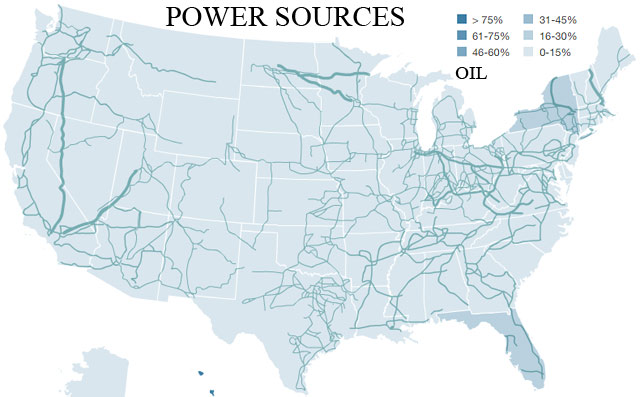
States most reliant on electricity from oil:
There’s really no heavily dependent state in this regard.
States that rely heavily on hydro power

States most reliant on electricity from coal:
Idaho
Oregon
Washington
South Dakota
Map of Every Power Plant in the USA
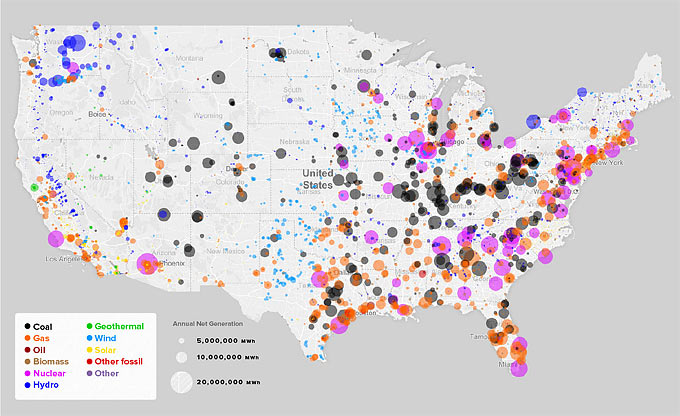
source: visualcapitalist.com
What’s the point of all this?
Why am I posting this on a preparedness blog?
To emphasize the complicated web of reliance that we have on these sources of energy to keep the system going. And the systemic risks that are certainly built-in.
Read more: If The Lights Went Out In America

I thought it was interesting to know which States may be heavily dependent upon one type of electricity generation source versus those which may be more diversified.
It doesn’t really affect us one way or the other. At least while systems are “Go”.
I get my electricity from ‘the grid’. However I do have supplemental alternative energy from a PV solar panel system. It’s not a big system, but enough to power all my critical systems in the house.
It was not really cost effective. But it does give me peace of mind in the electricity department.
From a preparedness standpoint, in a disastrous collapse scenario, I would rather have some alternative source of energy than be forced to get by without it. Even a small portable system to power up some essentials would be beneficial!
Read this novel and you’ll never be the same:
ONE SECOND AFTER

Continue reading: Solar Energy – A Simple Alternative

